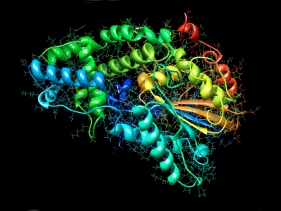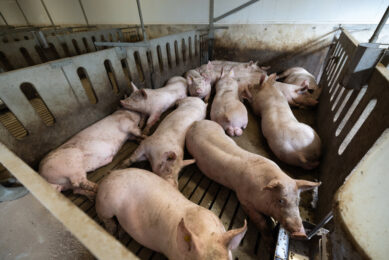Scientists discover final piece in phytate jigsaw

A team of scientists in Spain and the UK have identified the final piece in the jigsaw of how phytate is produced in plants.
Published today by PNAS, the breakthrough discovery by the Consejo Superior de Investigaciones Cientificas (CSIC) in Madrid and the University of East Anglia (UEA) has implications for agribusiness, the environment and human health.
Phytate is a naturally-occurring phosphate deposit which accumulates in the seeds, beans and tubers of many crops. The researchers have identified for the first time how the enzyme that produces phytate works, by solving the molecular structure of the protein IP5 2-kinase.
Because many animals are unable to digest the phytate present in their feed, the phytate phosphorus is transferred to the soil as manure, leading to the harmful pollution of waterways.
As a result, the animal feedstuffs industry currently adds the enzyme phytase to the raw materials which allows animals to absorb the phosphorus complexed within phytate.
This is a costly process, and so the industry needs to identify low-phytate varieties of crops such as maize, rice, wheat, barley and soybean. This new discovery completes our understanding of how phytate is made by plants.
"This is a hugely exciting discovery as scientists have been searching for this final piece in this jigsaw for so long, and because phytate has such a wide-ranging impact in agriculture, the environment and human health," said co-author Dr Charles Brearley, of UEA’s School of Biological Sciences, who collaborated in this work with Dr Beatriz González of CSIC’s Intituto de Quimica-Fisica "Rocasolano".
Victor Raboy, a crop geneticist at the US Department of Agriculture, commented: "Understanding this unique aspect of inositol phosphate chemistry has broad significance not only for plant biology and agriculture but also for non-plant eukaryotic cellular metabolism and signal transduction.
"For example, it will also enhance our understanding of how yeast, slime moulds and fruit flies function, and potentially could have future importance in understanding human disease and in designing therapies."











